R.J. Stowell's Blog: rjsomeone, page 40
September 20, 2019
Toppermost of the Poppermost - Lennon Leaves the Beatles
 September 20, 1969 - The End
September 20, 1969 - The EndOn this day in 1969, John Lennon told Paul and Ringo that he was leaving The Beatles. Lennon said, "I want a divorce" and "the group’s over." George Harrison was visiting his "mum" and wasn't there to hear Lennon's declaration.
The meeting took place at Apple headquarters at 3 Savile Row where the Beatles had perfromed their impromptu rooftop concert just three months prior. On their way out of the offices, Lennon told his new wife Yoko Ono, "It's just you and me now."
In an interview with Sir David Frost for Aljazeera, Sir Paul said the departure of Lennon from the band was expected. "I think it was time for John certainly to leave. It was a bit of shock to all of us. He just announced, 'Oh, I'm leaving the group.' We all said, 'Are you sure about this?' We tried to keep it together, but he was definitely going to leave so that was basically what did it. But I think, in a way, then we realized that we had come full circle, we had kind of done everything we wanted to do…"
 The Beginning - The Beatles Perform for 19
The Beginning - The Beatles Perform for 19Paul said this about Yoko: "She certainly didn't break the group up. The group was breaking up and I think she attracted John so much to another way of life, that he then went on to, very successfully. It added a sort of second part to his career, writing things like ''Imagine' and ''Give Peace a Chance'. I don't think he would have done that without Yoko."
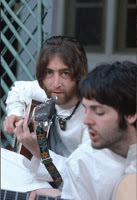 Indeed, they had done everything they wanted to do and more. The Beatles had reached the summit that John Lennon had envisioned for them: "The Toppermost of the Poppermost," a paraphrase from The Wild Ones, the Marlon Brando film from 1954 (Stu Sutcliff's favorite).
Indeed, they had done everything they wanted to do and more. The Beatles had reached the summit that John Lennon had envisioned for them: "The Toppermost of the Poppermost," a paraphrase from The Wild Ones, the Marlon Brando film from 1954 (Stu Sutcliff's favorite)."Where're we goin' fellas?" "To the top, Johnny!" "And where's that fellas?" "To the toppermost of the poppermost!"
Sutcliff would also come up with the band's name, changing the second E to an A and dropping the "Silver" from The Silver Beetles. The mythology tells it a bit differently. In an interview in 1964, John said, "Well, I had a vision when I was twelve. And I saw a man on a flaming pie, and he said, 'You are the Beatles with an A.' And so we are." Flaming Pie would be used as the title for a Paul McCartney solo LP in 1997, recorded during the Anthology sessions.
Published on September 20, 2019 05:26
September 19, 2019
Cass Elliot - Gertrude Stein of Laurel Canyon
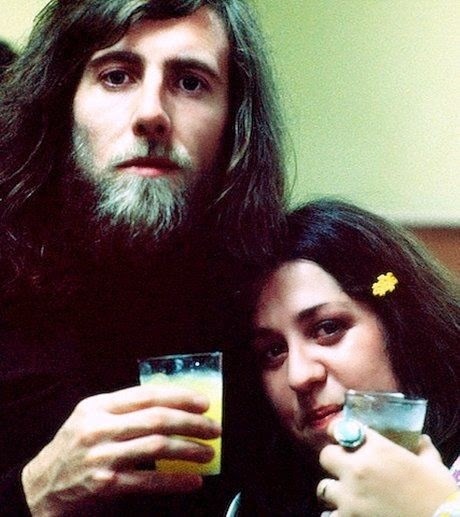 Graham Nash & Mama CassHappy Birthday to the Gertrude Stein of Laurel Canyon. Mama Cass born this day in 1941.
Graham Nash & Mama CassHappy Birthday to the Gertrude Stein of Laurel Canyon. Mama Cass born this day in 1941.A huge buzz in the Laurel Canyon community in the mid '60s surrounded the auditions to find four wacky musicians for a television show called The Monkees. Originally, Stephen Stills of Buffalo Springfield auditioned for a part, but his "snaggle tooth" kept him from nabbing the role. So instead, he recommended his roommate, flower child Peter Tork. Their comedy genius (John Lennon likened The Monkees to the Marx Brothers) combined with some of the greatest songwriters of the decade (Boyce & Hart, Neil Diamond and Laurel Canyon resident songwriter Carole King) would eventually earn them respect as bona fide performers. In addition, Dolenz and Tork's homes were known for some of the most famous - and infamous - parties in the canyon.
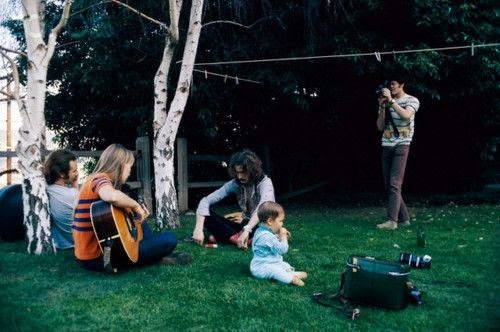 David Crosby, Joni Mitchell, Eric Clapton, Owen Elliot & Mickey Dolenz
David Crosby, Joni Mitchell, Eric Clapton, Owen Elliot & Mickey Dolenz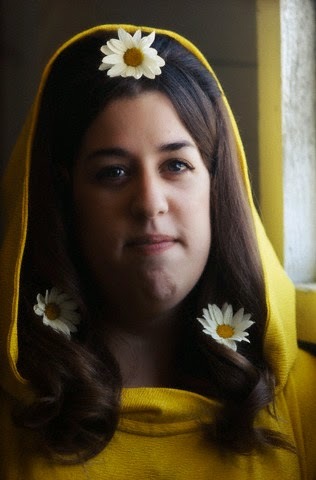 Known as Laurel Canyon's "Gertrude Stein," Mama Cass Elliot was one of the canyon's most beloved residents, and was known to host legendary get-togethers as well as for making connections between her musician friends that would change American music history. Gertrude Stein had served this role for the American expatriates in Paris in the 1920s, single-handedly bringing the modern art movement to prominence and helping to launch the careers of Hemingway, Picasso and James Joyce.
Known as Laurel Canyon's "Gertrude Stein," Mama Cass Elliot was one of the canyon's most beloved residents, and was known to host legendary get-togethers as well as for making connections between her musician friends that would change American music history. Gertrude Stein had served this role for the American expatriates in Paris in the 1920s, single-handedly bringing the modern art movement to prominence and helping to launch the careers of Hemingway, Picasso and James Joyce. In the fickle world of music it wasn't unusual for bands to break up and its members to regroup with other musicians. The Crosby, Stills & Nash blend had been brewing for a while. In-fighting within Crosby's and Stills' bands caused Stills to leave the Buffalo Springfield and Crosby to be kicked out of The Byrds. The two decided to form their own short-lived group, the Frozen Noses. It was during this time that Crosby, on a trip to Florida, discovered a fair-haired Canadian folk singer named Joni Mitchell. So impressed by her musical brilliance, he brought her back to L.A. and over to Mama Cass' house. Joni was a triple threat - an angelic voice, a poetic writer and a uniquely accomplished guitar player. Even Eric Clapton on a visit to Laurel Canyon was in awe watching Mitchell's unique guitar playing style. With Mitchell moving into the neighborhood and Crosby and Stills singing together as a duo, Mama Cass made a connection that would make music history in more ways than one! Cass knew the duo needed another voice even if they didn't, and she also knew that British pop star Graham Nash was not very happy in his group, The Hollies. Cass arranged a meeting between the three harmonic singers, and Crosby, Stills & Nash was born. And, of course, so was the relationship between Joni and Graham.
Watch this video on The Scene.
Published on September 19, 2019 14:50
Robert Frank - Exile on Main Street
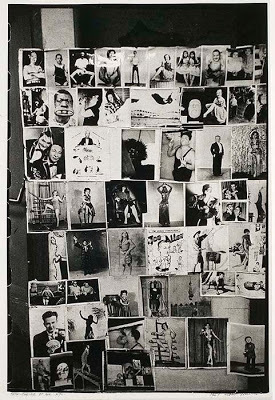 In 1955, Robert Frank (November 9, 1924 – September 9, 2019) received a Guggenheim scholarship to "[discover] what one naturalized American finds to see in the United States that signifies the kind of civilization born here and spreading elsewhere." With the monies provided, Frank took a year-long road trip with a Super 8 camera and a used Ford Coupe and traveled across Eisenhower's America, from the deserted towns of the Midwest to the Hollywood Hills, photographing an American culture that wasn't a part of the "Pleasant Valley Sunday." Like Diane Arbus, Robert Frank was looking at American diversity. Frank turned his opportunity into an often bleak yet beautiful black and white expose of a different world, one of nuclear tensions and racial divide.
In 1955, Robert Frank (November 9, 1924 – September 9, 2019) received a Guggenheim scholarship to "[discover] what one naturalized American finds to see in the United States that signifies the kind of civilization born here and spreading elsewhere." With the monies provided, Frank took a year-long road trip with a Super 8 camera and a used Ford Coupe and traveled across Eisenhower's America, from the deserted towns of the Midwest to the Hollywood Hills, photographing an American culture that wasn't a part of the "Pleasant Valley Sunday." Like Diane Arbus, Robert Frank was looking at American diversity. Frank turned his opportunity into an often bleak yet beautiful black and white expose of a different world, one of nuclear tensions and racial divide.Frank was a part of the Beat generation and worked and associated with the likes of Jack Kerouac, who wrote the preface to The Americans, a collection of 83 of his 27,000 photos published in 1958, Lawrence Ferlinghetti and Allen Ginsburg; indeed, Frank's book was "howling" as well.
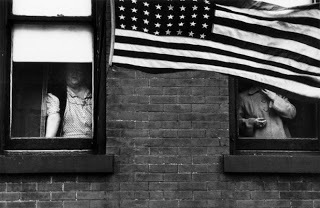 Kerouac wrote, "Robert Frank, Swiss, unobtrusive, nice, with that little camera he raises and snaps with one hand he sucked a sad poem right out of America onto film, taking rank among the tragic poets of the world…you end up finally not knowing any more whether a jukebox is sadder than a coffin." One of the photos from the collection, a shot of a collage from a tattoo parlor, was used as the cover for the Rolling Stones’ Exile on Main Street in 1972.
Kerouac wrote, "Robert Frank, Swiss, unobtrusive, nice, with that little camera he raises and snaps with one hand he sucked a sad poem right out of America onto film, taking rank among the tragic poets of the world…you end up finally not knowing any more whether a jukebox is sadder than a coffin." One of the photos from the collection, a shot of a collage from a tattoo parlor, was used as the cover for the Rolling Stones’ Exile on Main Street in 1972.My father painted those rock billboards on the Sunset Strip in L.A. from 1967 through 1977. I captured his career in my fictional memoir Jay and the Americans in 2017. Here's the Exile passage:
The bus went down the Sunset Strip and I kept looking for my father. I was still kind of angry, but I was looking for him. I saw a billboard. It was half done. It was for the Rolling Stones’ Exile on Main Street. On the left in shades of gray was General Tom Thumb from the circus. Next to him was an African guy with three balls in his mouth. The rest of it was blank except it said “Exile on Main St.” in quotes at the bottom in red letters and “Rolling Stones,” and it had those red lips. As we passed I saw a man in coveralls climbing the ladder, but it wasn’t him. He didn’t paint them all. He didn’t paint most of them, but it felt kind of funny. I thought it was him.
Published on September 19, 2019 05:22
September 18, 2019
Abbey Road and The Guardian
I'm not sure why no one is challenging Mark Lewisohn's claims about a Beatles audiotape purportedly proving they were planning an LP after Abbey Road. Don't get me wrong, I'm a Lewisohn reader and have always taken his word as a Beatle scholar, but no one – NO ONE – but Lewisohn and The Guardian have actually heard this tape. I understand marketing and grasping an opportunity when it arises. Obviously, Miles From Nowhere, a novel with Woodstock at its core, got plenty of free publicity for the 50th anniversary of the concert. But I didn’t make anything up, nor did I make any claims that cannot be substantiated. Lewisohn and The Guardian, on the other hand, have made uncorroborated claims that, if there were really a tape, could be easily verified. All we get instead is an article of hearsay, just in time for Lewisohn’s new roadshow, a 21-date UK tour in which Lewisohn will present a two-hour live presentation on all things Abbey Road. I guess in our Trumpian world, truth is only hearsay's pawn. I know this because my cousin's friend knows a man who told a girl on the train…
Just a call out to The Guardian – let's hear the tape.
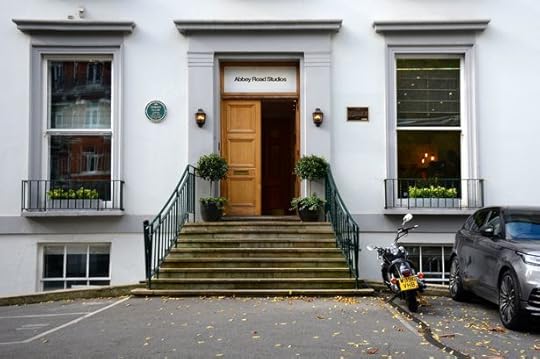
Just a call out to The Guardian – let's hear the tape.

Published on September 18, 2019 13:01
Miles From Nowhere
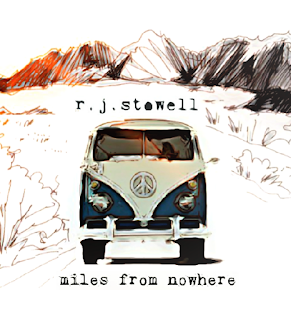 Miles From Nowhere...
Miles From Nowhere... ...is available on Amazon and for your Kindle!
Join Miles for free on Kindle Unlimited or order the Kindle version for $2.99. The softbound version is $10.99.
Miles From Nowhere is a rock 'n' roll pilgrimage, the journey of a young man in poor health as he travels from California to Woodstock to see his idol, Jimi Hendrix. Along the way, he meets friends and family, an entourage of hippies and bohemians, musicians and socialites, and each time you put the novel down you'll have another familiar song in your head.
Order your copy of Miles From Nowhere on Amazon or click the links in the sidebar. Order here on the website and get a personally autographed copy for just $14.00 including shipping.
Published on September 18, 2019 03:13
September 17, 2019
The "Let It Be" Ghost Guitar
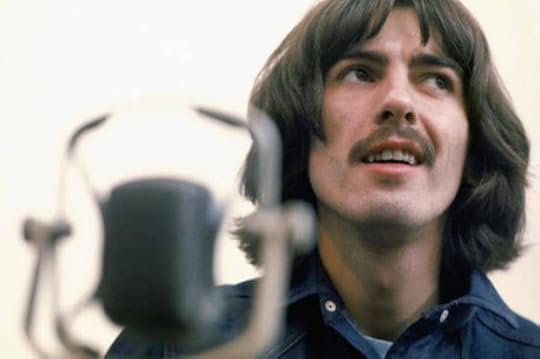 We tend to use the release date of an LP to guide us chronologically, yet with Abbey Road and Let It Be, that's simply not the case. Abbey Road, in particular, the Side 2 medley, was the last piece of music the Beatles ever worked on collectively. Let It Be would be released after the band broke up (and contributed to the breakup), but its problematic recording sessions came prior to Abbey Road. Because of Abbey Road's release date 50 years ago, Let It Be is often glossed over. That said, there's something I find so interesting about the recordings that made up the Let It Be sessions, one based on the associated issues in production: the ghost guitar on the title track.
We tend to use the release date of an LP to guide us chronologically, yet with Abbey Road and Let It Be, that's simply not the case. Abbey Road, in particular, the Side 2 medley, was the last piece of music the Beatles ever worked on collectively. Let It Be would be released after the band broke up (and contributed to the breakup), but its problematic recording sessions came prior to Abbey Road. Because of Abbey Road's release date 50 years ago, Let It Be is often glossed over. That said, there's something I find so interesting about the recordings that made up the Let It Be sessions, one based on the associated issues in production: the ghost guitar on the title track.There are two different versions of the song, "Let It Be." If you have the opportunity, listen to them both. The single version has a far more subtle guitar solo at the midpoint of the song (1:59), a loose string version that lends itself to the 45, and sounding as if an acoustic guitar had been electrified. The LP version, on the other hand, contains a more electrified solo. Listen to them back to back. But that there are two diverse versions of the song isn't the unusual part. What's odd is the ghost solo hidden beneath the layers of music that appears in both the single and the album versions. It's hard to hear unless you tune your ear to it, so it may be helpful to isolate the left side on the stereo version or to listen to the track by clicking your receiver to mono.
What was interesting and appealing about the project tentatively titled Get Back, meaning the Beatles getting back to the roots, is this noble idea of returning to the live sound that the Beatles had been famous for, starting with those Hamburg club dates. That in mind, the Beatles entered the studio on January 31, 1969, to record the track. "Let It Be," and by they, I mean all four of the Beatles, with Paul on piano, John Lennon oddly playing the bass, Harrison pm lead guitar, and Ringo on drums. Add to that, Billy Preston on the Hammond organ.
Ultimately, the single version of "Let It Be" was released March 6 and produced by George Martin. It would go to Number 1 on the Billboard Top 100. The album version was released in May 1970. On the back of the album, there's a phrase that states, "This a new-phase Beatles album;" the reality is, the Beatles had already broken up in April. just prior to the LP's release.
The album version of "Let It Be" had a headier, heavier guitar solo lushly, some would say overly-produced by Phil Spector; the George Martin version more typically Beatle-esque. Interestingly, both Spector and Martin left in the "ghost solo," an earlier take somehow left audible in the background of the masters which were subsequently released as the single and the album.
So, let's put the pieces together. On January 31, 1969, with the other Beatles, George recorded an original guitar solo, the ghost track that can be heard faintly but distinctly in the background. George was back in the studio alone on April 30, 1969, and recorded the solo that's on the 45. On January 4, 1970, George again took the master tape, recorded a year prior, and overdubbed what Phil Spector would use for the LP version. Here's something else; 30 years later, Paul McCartney produced an alternate version of the album called Let It Be Naked which eliminates the orchestral and heavy-handed production by Phil Spector on the original lp. For that version of "Let It Be," McCartney chose yet another solo from the January 1969 sessions. The ghost guitar? Still there.
Published on September 17, 2019 04:56
September 16, 2019
Let It Bleed
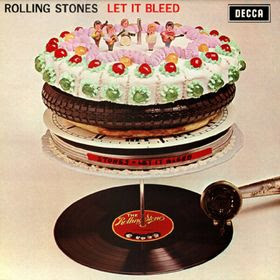 Throughout the 1960s, the Rolling Stones were consistently overshadowed by the Beatles. Despite 1968's stellar Beggars Banquet,among the greatest albums ever recorded, the Stones played second fiddle. Of course, the immensity of the Beatles is undeniable. Think about it: in 1967 the Beatles released both Sgt. Pepper and Magical Mystery Tour. Critically speaking, more often than not, Sgt. Pepper is considered the greatest album ever recorded, and "Strawberry Fields" the greatest single. The first worldwide television broadcast, Our World, in 1968 featured the Beatles as the British component in a live recording of "All You Need is Love." Watch that video to find good friends Mick Jagger and Keith Richards essentially backing the Beatles. 1968 would also bring "Hey Jude" and The White Album, and 1969 Abbey Road. Consistently the Rolling Stones were overshadowed. Her Majesties Satanic Request was a pale comparison to Pepper and yet Beggars Banquet was its peer. If you're going to be in someone's shadow, it may as well be the Beatles; nonetheless…
Throughout the 1960s, the Rolling Stones were consistently overshadowed by the Beatles. Despite 1968's stellar Beggars Banquet,among the greatest albums ever recorded, the Stones played second fiddle. Of course, the immensity of the Beatles is undeniable. Think about it: in 1967 the Beatles released both Sgt. Pepper and Magical Mystery Tour. Critically speaking, more often than not, Sgt. Pepper is considered the greatest album ever recorded, and "Strawberry Fields" the greatest single. The first worldwide television broadcast, Our World, in 1968 featured the Beatles as the British component in a live recording of "All You Need is Love." Watch that video to find good friends Mick Jagger and Keith Richards essentially backing the Beatles. 1968 would also bring "Hey Jude" and The White Album, and 1969 Abbey Road. Consistently the Rolling Stones were overshadowed. Her Majesties Satanic Request was a pale comparison to Pepper and yet Beggars Banquet was its peer. If you're going to be in someone's shadow, it may as well be the Beatles; nonetheless…1969 however, was that transitional year when the Rolling Stones began the takeover as the greatest rock band in the world. The transition started with Banquet, but more impressively continued with Let It Bleed.
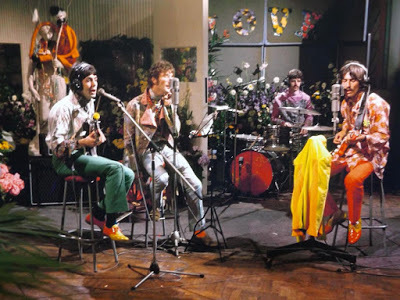 As an aside, keep in mind that the title, Let It Bleed, is a play on the Beatles' Let It Be, and appropriate for the bad boys of rock. I've mentioned this on the air before only to get flack because Let It Bleedwas released the year prior to Let It Be. Although that's the case, Let It Bewas recorded long before Abbey Road. It's the order of the releases that's confusing.
As an aside, keep in mind that the title, Let It Bleed, is a play on the Beatles' Let It Be, and appropriate for the bad boys of rock. I've mentioned this on the air before only to get flack because Let It Bleedwas released the year prior to Let It Be. Although that's the case, Let It Bewas recorded long before Abbey Road. It's the order of the releases that's confusing.Let It Bleed was recorded throughout 1969 in a tumultuous time for the Stones who were having as much trouble with Brian Jones, the same kinds of trouble, as Pink Floyd had with Syd Barrett. Illicit drug use, LSD, and an over the top rock 'n' roll lifestyle brought the downfall of both. Jones in 1969 participated in the production of Let It Bleed on a minimal level. And remember, this wasn't Mick's band or Keith's band, the Rolling Stones were Brian Jones' band, and now he was participating in a superfluous way that midyear led to his firing from the Rolling Stones and his death just a month later. That only emphasizes Keith Richards' role as the band's guitarist. While Mick Taylor replaced Jones, he too played a minimal role in the album's production, leaving the vast majority of guitar lead and rhythm to Richards. Work on the album began in November 1968 with "You Can't Always Get What You Want," a part of the Beggars Banquet sessions, but Let It Bleed's production began in earnest in February 1969.
 The stones were busily working on Let It Bleed with the release date scheduled for June 1969. Subsequently, there was no interest in Woodstock for the band and like Led Zeppelin, an American tour was scheduled instead. Because of the delays associated with Brian Jones mal-adventures, and the release of "Honky-Tonk Woman" as a single in July 1969, the album's release was pushed back until the Stones' American tour ended in December 1969. That tour led to the Live LP Get Yer Ya-ya's Out, the first live LP ever to make it to No. 1 on the British charts, released by Decca Records in response to the bootleg, Liver Than You'll Ever Be.
The stones were busily working on Let It Bleed with the release date scheduled for June 1969. Subsequently, there was no interest in Woodstock for the band and like Led Zeppelin, an American tour was scheduled instead. Because of the delays associated with Brian Jones mal-adventures, and the release of "Honky-Tonk Woman" as a single in July 1969, the album's release was pushed back until the Stones' American tour ended in December 1969. That tour led to the Live LP Get Yer Ya-ya's Out, the first live LP ever to make it to No. 1 on the British charts, released by Decca Records in response to the bootleg, Liver Than You'll Ever Be.Let It Bleed was recorded both in London at Olympic Studios and in Los Angeles at Electra Sound Recorders where we can add Merry Clayton to the mix with the performance of a lifetime on "Gimme Shelter." When Let It Bleed was released in December 1969 at the top of the UK charts, it displaced, if temporarily, Abbey Road. Based on the success of Abbey Road in the US, of course, the most important market, Let It Bleed only made it to No. 2 on the Billboard Top 100, but was certified double platinum early in 1970. There is a six-album canon from the Rolling Stones, Beggars Banquet, Let It Bleed, Sticky Fingers, Exile on Main Street, Goat's Head Soup and It's Only Rock 'n Roll that define the Stones' status as the Beatles' successors; Let It Bleed at the top of the list.
Published on September 16, 2019 05:40
September 13, 2019
Meanwhile, the Dead...
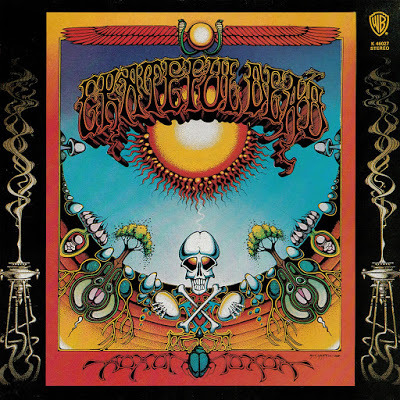 The Grateful Dead released two very diverse LPs in 1969. Aoxomoxoa, released in June, just before Woodstock, was iconic as a psychedelic experience that recreates the tripped-out vibe of the Dead's live shows. Live Dead, which came out in late December, skips the studio artifice and delivers the kind of live LP that every band strives for.
The Grateful Dead released two very diverse LPs in 1969. Aoxomoxoa, released in June, just before Woodstock, was iconic as a psychedelic experience that recreates the tripped-out vibe of the Dead's live shows. Live Dead, which came out in late December, skips the studio artifice and delivers the kind of live LP that every band strives for.Garcia said, "Live Dead was recorded about the same time we were working on Aoxomoxoa. If you take them together, you have a picture of what we were doing at that time." While not as solid as the Dead's sophomore effort, Anthem of the Sun, Rolling Stone reported that Aoxomoxoa was "the work of the magical band. Can you hear this music and not see them before your eyes?"
Garcia continued, "When we started, Aoxomoxoa was an eight-track record, and then all of a sudden, there was a 16-track recorder in the studio, so we abandoned our eight-track version and started over with a 16-track. At the time, we were sipping STP [a sort of supercharged LSD, which produces 72-hour trips] during the sessions, which made it a little weird – in fact, very weird."
"We only recorded a few gigs to get that album," Garcia recalled. "We were after a certain sequence of the music. It's our music at one of its really good moments." Garcia's playing is flawlessly consistent and Weir shines for the first time showing the band in evolution. While the Dead's performance at Woodstock was problematic and subsequently lackluster, Live Dead was a hint at the greatest of live bands.
 While I still enjoy the LP, it's not at the core of the band's studio LPs (Workingman’s Dead, American Beauty, Mars Hotel). And yet the recording had armed the Gratefuls with the Ampex 16-track recorder, which allowed them the ability to bring the live shows to life on vinyl, charting a definitive course.
While I still enjoy the LP, it's not at the core of the band's studio LPs (Workingman’s Dead, American Beauty, Mars Hotel). And yet the recording had armed the Gratefuls with the Ampex 16-track recorder, which allowed them the ability to bring the live shows to life on vinyl, charting a definitive course. The double LP begins with the side-long "Dark Star," 23 minutes of guitar jam with but a hint of vocals, the emotional performance straight from Dead souls. Each time the band goes into jam mode, the music is instantly mesmerizing.
"Saint Stephen" on Side 2, slows things down melodically and hits you in the face again with "The Eleven." "Turn On Your Love Light" is a fast-paced boogie-woogie that reminds one of a stoned "Jailhouse Rock." "Feedback" is for many the part of the LP you skip. It's not a song, but a collection of psyched-out noises followed by "And We Bid You Goodnight," a 30-second ditty that sums it all up.
*Two fun things. The lettering for American Beauty by Rick Griffin also spells out "American Reality" and if one looks closely, imagination intact, Griffin's lettering of "Grateful Dead" on Aoxomoxoa spells out "ATE THE ACID."
Published on September 13, 2019 05:34



